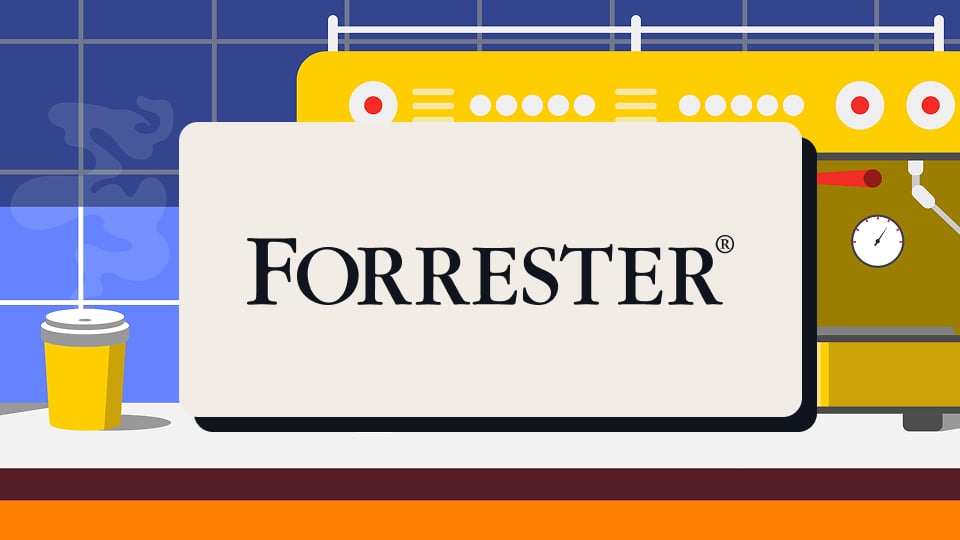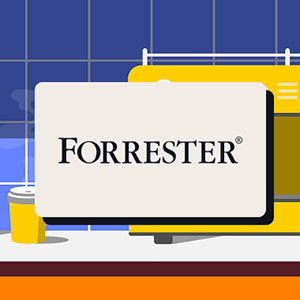SCA upgrades to Optimizely CMS 12 cloud with headless solution
At a glance
- Dramatic improvement in page load speed from 43 to 70 and accessibility from 78 to 98 as per Google Lighthouse
- Enhanced separation of responsibilities between front-end and back-end developers
- Better cost efficiency in terms of direct costs
- Upgraded security and privacy
Driven by the force of the forest
Svenska Cellulosa Aktiebolaget, better known as SCA, was formed in 1929 and has grown to become one of the most important companies in Sweden, both as an employer and as a contributor to Swedish society. The business currently employs 3300 people and turns over around $1.7bn per year.
SCA is the largest private forest owner in Europe, with around 2.7 million hectares of land in Northern Sweden and the Baltics. That equates to almost the size of Belgium. Originally formed by the merging of around 10 different forestry companies, today’s SCA operates six distinct business lines (Forest, Wood, Pulp, Containerboard, Renewable Energy and Logistics) that look very different to 100 years ago but remain driven by the force of the forest.
Focusing on greater synergies and better communication
SCA’s long history, with a shifting of focus from traditional forestry and timber production to a wider mix of sustainable products, including biofuels and green chemicals. The business has also set itself objectives to invest in wind power and to optimize production and processes.
Optimizely has provided SCA with its content management solution for many years. The partnership has been a fruitful and successful one, so SCA had no interest in changing provider. However, over time, SCA started to consider the benefits of switching from its on-premise system to a cloud-based-solution.
SCA operates multiple websites. In addition to SCA.com, the platform hosts scasmarttimber.com, stiftelserna.com and skogsvinge.se. SCA was eager to consolidate and align communication messages to capture synergies of scale and deliver a consistent brand experience. It was also desirable to update the technical platform for a better editor experience. Upgrading the system would also ensure compliance with the latest security and privacy best practices.
There were also several incumbent platforms with which the new solution would need to integrate. These included SCA’s authentication platform, Cision, as well as Friendly Captcha, Piwik Pro and Imagevault.
Moving to a headless cloud solution
After a consultation period in which SCA’s partner Comprend was instrumental, SCA decided that a cloud-based solution would be best equipped to help it meet the medium and long-term objectives already outlined.
Migrating from on-premises to a SaaS solution brings several instant benefits:
- Reduced risk from a business interruption perspective – the consequences of fire, flood or earthquake are immediately reduced.
- Always on the latest version – no more waiting around while the system updates or the latest security patch is installed. And no risk of missing out on better security or functionality by running an old version.
- Real-time data backups mean better security and less time and hassle on manual backup processes.
- Best possible security, even better than on-site.
SCA also decided that a headless CMS would provide optimum flexibility. Put briefly, a headless system is essentially a “back end only” repository of data. It is suitable for businesses that use multiple channels and have legacy front end systems in place.
In the case of SCA, a headless CMS meant it was free to use React as its front-end framework for increased developer efficiency and navigation performance. They can implement their design system as code and share this and other content across multiple channels. SCA also felt that the headless solution delivers better separation of responsibilities between front-end and back-end developers. Templating uses React framework code, there are separate repositories for presentation code and CMS code and at the front-end, developers can use content fetched directly from the DXP cloud.
SCA’s Enterprise Architect Board did the final prototyping and approval, and most content was re-published manually by content editors, while green field and product information was migrated automatically. Strategy architecture and anchoring within the organization took about five months, while building and launch took six months. The new system launched in January 2023.
Comprend, SCA’s implementation partners, were on hand to define the new architecture for the transition from the existing on-premises software to the new cloud solution and from head on to headless frontend architecture. They also worked on the communications strategy, including content workshops, message framework and structure, and the visual concept for the website.
Implementation of the new headless CMS
With the new system, editors can continue to work with content in the same way as they did before. The mechanisms for display of public web pages are built around the Optimizely Content Delivery API, but with added optimizations, custom content filters and conversions to reduce the number of network requests and improve page-load and navigation speed.
All the templates for public web pages are built in React and rendered on the server side for the first page view and on the client side for subsequent page views. The Microsoft ClearScript script engine, which is a .NET-based component, is used to render the page content of initial page views with React templates on the server side. This avoids the need for a separate server environment for page rendering, which simplifies the hosting architecture and the deployment procedures compared to some other common setups for websites with headless CMS solutions.
The websites can also be viewed in a purely headless mode, without any server-side rendering. This is particularly useful to front-end developers, who can use content from the DXP cloud while working on the React-based website templates.
Immediate benefits
The new platform has been set up and designed with editors experience in mind, making their daily work easier. The privacy and security issues that were beginning to cause concern with an older system have also been fully addressed by adopting an up-to-date cloud-based solution.
As far as measurable benefits are concerned, the previous start page scored 43 for speed in Google Lighthouse, and the new one scores 70. This represents a significant improvement and is an impressive result for a website that has been built with design and profiling considerations ahead of speed. It is not just the start page that has improved. Other pages have benefited from similar speed improvements, increasing from 60 to 64 and 75 to 83. It is also worth noting that the headless architecture with a single-page-application concept improves the perceived speed of internal navigation within any of the websites on the web platform. This is particularly noticeable on mobile devices such as smartphones, which tend to be relatively slow.
The new platform has also delivered cost savings. The overall platform is more cost efficient in terms of direct cost. In addition, SCA's team has reaped the benefits of internal value creation, as the IT team does not need to focus on internal operations of the website.
Building on a successful relationship
Optimizely is proud to have worked alongside both SCA and Comprend for several years. When the time came to replace the legacy system, Optimizely and SCA were able to build on the existing relationship and build a solution that delivered measurable immediate benefits.
Optimizely's CMS now puts SCA in the best possible position to meet its strategic objectives in challenging times as a key player in an industry that is undergoing rapid change and evolution.
Industry
Manufacturing and distribution

